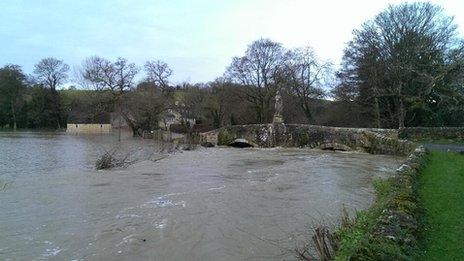Chertsey flood victim says homes at risk ten years after floods
- Published

Hannah Rush said the so-called Chertsey "sausage" did not protect her home
A woman whose home was flooded during severe weather across south-east England 10 years ago says nothing has been done to stop it happening again.
Hannah Rush moved out of her home in Chertsey, Surrey, for a year after the Thames burst its banks in 2014 - but she said the property is still at risk.
Floods hit Kent and Surrey in December 2013 and continued for months, causing widespread damage to property.
Surrey County Council said a range of flood defence measures were in place.
December 2013 saw a tidal surge in east Kent before storms lashed southern England on Christmas Eve.
This was followed by power cuts on Christmas Day when passengers were left stranded at Gatwick Airport.
Further rainfall brought more flooding in Kent in the new year, while high tides, large waves and coastal floods hit Sussex.
The Thames floods of February 2014 saw hundreds of families leave their homes, and further tragedy came to Chertsey with the death of seven-year-old Zane Gbangbola.

Ms Rush said the army was sent in but residents needed more help
Ms Rush, 48, who lives less than half a mile from the Thames, watched the water table rise in a well near her home as the floods approached.
Two days before her home flooded, she said officials warned her an aquadam - known as the Chertsey "sausage" - would not protect her house.
She moved furniture out, but the flood still caused £275,000 damage to the property and doubled her insurance premiums.
Other family members stayed elsewhere, but Ms Rush lived upstairs with her four dogs.
"The army came down and delivered sandbags, but sandbags don't do anything," she said.
"They [the authorities] had previously promised dredging and flood defence systems. Nothing has been done.
"I get leaflets through the post saying there's a flood talk at a local community centre, but that's not going to do anything."
Ms Rush said a flood alert for the River Bourne has been in place for weeks.
"I've got Alexa set up for flood alerts, and we've had one for over a month," she said.
"We walk over the meads a few times every day and it's totally under water, the water table is so high."

Ms Rush said the plaster had to be stripped out of the house and her garden was ruined
Surrey County Council (SCC) said it was working with the Environment Agency and local borough councils to deliver The River Thames Scheme, which will protect thousands of homes, businesses and infrastructure, with statutory consultation expected in early 2024.
The council said flood protection measures had been installed in 160 houses in the Caterham area and it was working with 15 organisations to investigate and manage flood risks.
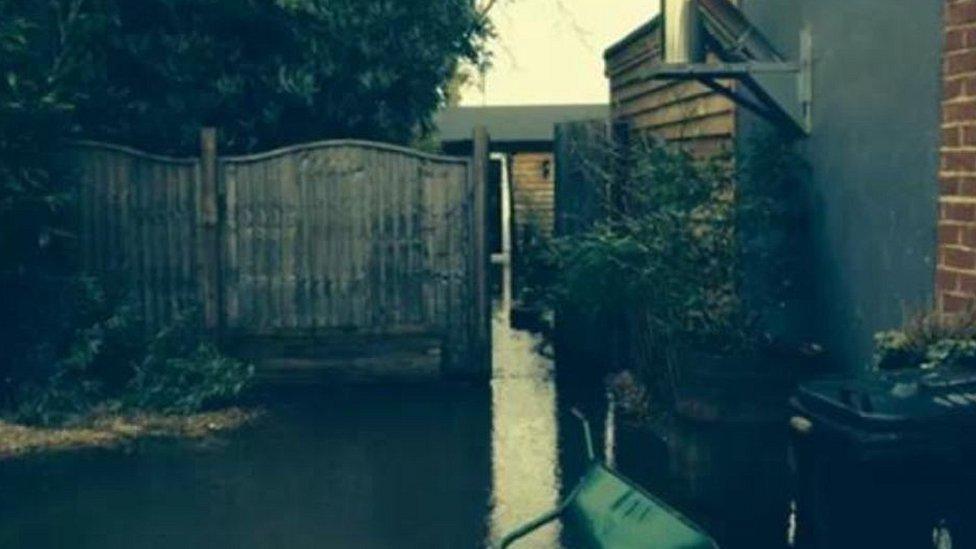
Hannah Rush saw her house and garden flood
Investigations between April 2022 and October 2023 had identified 617 properties as having experienced flooding, the council added.
Work with Surrey's 11 planning authorities had seen surface flood water risk considered on over 1,500 planning applications in 2023. SCC was also working with 12 flood action groups to help communities better understand flood risks.
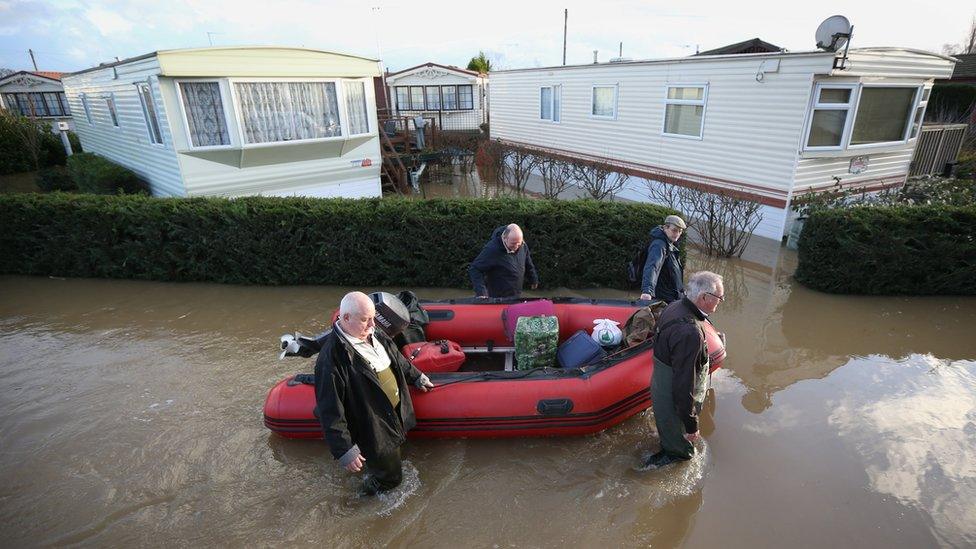
Yalding, Collier Street and Hunton were among the areas badly-affected in Kent
David Goff, from Collier Street in Kent, says his home was flooded in 2000. By winter 2013-14 he had protected his house, but his garden was left underwater.
He said: "In Collier Street, the river [the Lower Teise] comes down the road 2ft deep and ends up in my garden. We're on flood alert now. Every winter, the village is affected."
Mr Goff, a trustee at the National Flood Forum (NFF), a charity which helps people at risk of flooding, said 250 houses in the area around Hunton, Yalding and Collier Street, which had all been affected 10 years ago, had since qualified for property flood prevention measures, such as flood doors and no-return valves to stop water coming through toilets.
However, about a dozen had not qualified and remained at risk, either because of their construction or their location.
He said that residents' mental health was still affected by the severe floods of 2013-14, adding: "I know one lady who will not go away on holiday. She's petrified it will happen again."
Mr Goff said: "There needs to be much better joined-up thinking from all the agencies involved in floods and flood protection, before, during and after."

Some properties qualified for flood protection measures but others remain at risk
Heather Shepherd, from the NFF, has called for a "bigger and bolder" flood strategy.
She said while the NFF recognised there were cost implications, climate change would see worse floods and future generations needed to be protected.
She said: "What we have at the moment is a huge emphasis on people's personal resilience, which undoubtedly has a place, but this needs to be dovetailed into a bigger bolder government vision."
Gatwick Airport, which was also hit by floods in 2013-14, said it took immediate steps.
A spokeswoman said: "We installed new water storage chambers at critical points at the airport, enhanced resilience in the North Terminal basement to offer better protection to critical assets, and improved systems used to monitor pumping stations and river levels."
An Environment Agency spokesperson said: "In Chertsey on 13 February 2014 the Environment Agency used an Aquadam defence (nicknamed the Chertsey Sausage) to protect around 155 properties from local flooding."
They added properties on the road that could not be protected by the aquadam were provided with sandbags, and pumps were deployed to reduce flood impact.
"Fortunately, river levels did not reach a height where the defence would have been needed. The temporary defences did not increase flood risk to any additional properties," the spokesperson added.

Follow BBC South East on Facebook, external, on X, external, and on Instagram, external. Send your story ideas to southeasttoday@bbc.co.uk, external.
Related topics
- Published17 February 2014
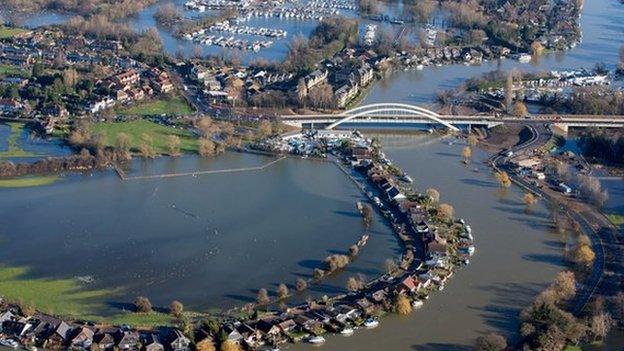
- Published15 February 2014

- Published14 February 2014
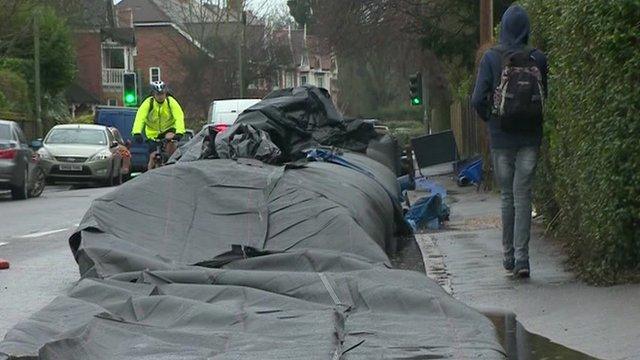
- Published10 February 2014

- Published10 February 2014
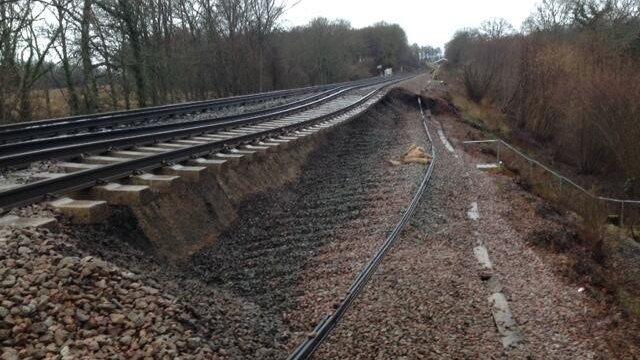
- Published7 February 2014

- Published17 January 2014

- Published24 December 2013
